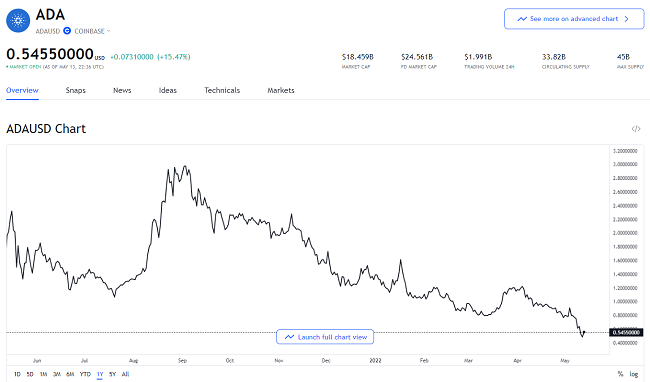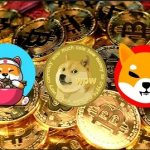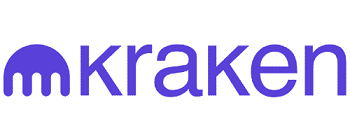Cardano is the platform on which ADA, a cryptocurrency that can be used to send and receive funds, was developed.
It is a smart contract platform, with some characteristics similar to Ethereum (not by chance since its creator, Charles Hoskinson, is one of the co-founders of Ethereum), offering new levels of security and scalability thanks to a multi-layer architecture. It is considered a “unicum” in the cryptocurrency universe because it was born with an extremely rigorous scientific and philosophical approach.
Cardano: what it is and how this cryptocurrency was created
As already mentioned, the creator of Cardano is Charles Hoskinson, according to whom, after Ethereum, it was necessary to think of an evolutionary model, a kind of second-generation blockchain, which would be made with special care and attention.
Therefore, Cardano is not the responsibility of one, but three different organizations: The Cardano Foundation, a non-profit organization that has a custodian role over Cardano with the task of standardizing, protecting, and promoting its technology; IOHK, or Input Output Hong Kong, founded in 2015 by Hoskinson himself together with Jeremy Wood, which is actually a research and development company focused on the application of blockchain innovations to create financial services accessible to all, to which has been tasked with developing, designing and maintaining Cardano until next year; and finally Emurgo, a Japanese company that develops and supports innovative business initiatives based on blockchain technology.
Therefore, the Cardano Foundation, IOHK, and Emurgo work in close synergy with each other.
How Cardano works, the third generation of blockchain
To understand the idea behind Cardano, we must take into account the opinion of Charles Hoskinson, according to which the blockchain has gone through three evolutionary stages.
- The first generation of blockchain is related to bitcoins and money transfers, which responds to a fundamental need: to create new forms of money transfer without intermediaries. The problem with this first generation of blockchain is that it is a technology limited only to monetary transactions, without the possibility of adding conditions to the execution of transactions unless especially complex codes are added.
- The second generation of blockchain is that of Ethereum and smart contracts, which allow money, property and shares to be exchanged transparently and without intermediaries. However, it is a perfectible solution, given the governance problems that have occurred over time and that, for example, have culminated in the separation of Ethereum and Ethereum Classic.
- The third generation is that of Cardano. To develop this solution, Hoskinson took the best of the previous two generations, adding other elements with the aim of solving three big issues that had not been solved until then:
- Scalability, increasing performance through a consensus mechanism based on the Ouroboros proof-of-stake algorithm and increasing bandwidth through new network topologies.
- Interoperability, thanks to a specific approach that aims to create a kind of “Internet of Blockchains”, using so-called sidechains
- Sustainability, through patronage and ICOs.
All this, it must be said, with a spasmodic attention to the quality of the code (Hoskinson speaks of High Assurance Code), also to avoid possible separations as happened in Ethereum.
The fifteen fundamental principles on which Cardano is based
As already mentioned, Cardano is distinguished by a particular, almost philosophical approach. The development team did not start from a roadmap, but first wanted to identify the principles, the best practices, and the lines of development to adhere to, identifying fifteen key points, which we reported as they are presented on the official website:
– Separation of accounting and calculation at different levels
– Implementation of the main components in modular code
– Small groups of scholars and developers competing with peer-reviewed research
– Use of interdisciplinary teams, including information security experts
– Rapid iteration between white papers, implementation, and further investigations required to correct detected issues
– Ability to upgrade systems after deployment without destroying the network
– Development of a decentralized funding mechanism for future work
– Long-term vision on improving the design of cryptocurrencies so that they can work on mobile devices with a reasonable and secure user experience
– Bring interested parties closer to the management and maintenance of their cryptocurrencies
– Recognition of the need to post multiple resources to the same ledger
– Inclusion of optional metadata in transactions to better fit the needs of legacy systems
– Taking into account the best features of all altcoins in circulation
– Adoption of a standards-based process
– Exploring the social elements of commerce
– Find a middle ground that allows interaction with regulators without compromising the fundamental principles inherited from Bitcoin.
How the money and Cardano protocol work
As you can guess, Cardano is a large-scale project, the development of which began in 2014 and has not yet been completed.
However, the substantive elements are already well defined.
The Cardano protocol works in two different layers: in the first, the so-called Cardano Settlement Layer (CSL) all transaction information is stored, a bit like with Bitcoin (how much ADA is sended, sender, receiver, time of transfer), and it is in this layer where the platform tokens, ADA, are transferred; the second layer, the Cardano Control Layer (CCL) manages account data, i.e. smart contract information such as digital identities.
Separating the two layers has the dual benefit of allowing updates to be done separately and selectively and of increasing security, since compromising one layer does not affect the second as well.
Ouroboros, Haskell and Daedalus
As we have mentioned before, Cardano uses a proof-of-stake protocol, which therefore allows developers to control very precisely under what conditions a user can use their tokens to verify transaction blocks and add them to the Cardano blockchain. The interested parties have a certain number of tokens that allow them to verify the transactions that are carried out in the network through stake pools. If the creator of a stake pool uses their tokens for their own exclusive benefit, the protocol recognizes the behavior, causing their earnings to be significantly reduced (fewer transaction blocks are allocated for processing and verification).
This means that the stake pools and their participants (ADA token holders who delegate their coins to a pool for transaction verification rewards) are assigned a role and function in checking and verifying transactions: the more ADA holders confirm them, the more transactions are made. The system rewards stake pools and delegators for their block verification activities.
The algorithm underlying this system, as already mentioned, is Ouroboros, and it was developed jointly by the Tokyo Institute of Technology, the University of Edinburgh, the University of Connecticut, and the IOHK, using a scientific and extremely rigorous methodology.
Other elements that characterize Cardano are the Haskell programming language, which is based on mathematical principles and functions and is, therefore, less prone to human error and it is easier to verify, and the Daedalus wallet, which not only manages the ADA tokens but also acts as a node.
Cardano roadmap and future
There are five stages of Cardano release:
- Byron – It allows users to trade and transfer Ada.
Cardano mainnet launch.
- Shelley – It is a stage in the design of Cardano that ensures the technology is ready to become a fully decentralized and autonomous system.
- Goguen – Integration of smart contracts.
- Basho: Focused on performance improvement.
- Voltaire: IOHK will add a treasury and governance system.
However, it will be the interested parties, that is, the holders of the ADA tokens, who decide what future developments will be integrated into the protocol. This form of government has the advantage that all stakeholders can vote under equal conditions and democratically, avoiding bifurcations.
Precio de Cardano
Like the rest of cryptocurrencies, ADA’s price has not been exempt from major fluctuations. After humble beginnings with a price of just a few cents per ADA, the cryptocurrency reached a peak of nearly $3 USD in mid-2021, but the complex political and economic conditions of recent months have caused a sharp decline in its value (as has occurred with other cryptocurrencies and stocks).
Currently, it is trading at $0.55 USD per-ADA.
How to Buy Cardano Online: A Step-by-Step Guide
Step 1. Find an exchange to buy Cardano
The first thing you need to do is find an exchange that allows you to buy ADA. Since Cardano is a fairly well-known cryptocurrency, you will find it on most major crypto exchanges. You may need to exchange your fiat currency (currencies like GBP, USD, and EUR) for a cryptocurrency before you can buy Cardano. The easiest way to do this is to buy Bitcoin and use it to invest in Cardano (ADA).
As for where to buy Cardano, here are some of the top exchanges you can use:
- Binance – One of the most popular cryptocurrency exchanges. Binance allows you to buy and sell hundreds of cryptocurrencies, and even offers its own coin to use as a trading pair. It also offers crypto derivatives like futures contracts.
- Kraken – Kraken is a major crypto exchange for the United States and offers all major cryptocurrencies and is one of the safest and most trusted platforms out there. It also offers a variety of other trading options and derivatives.
Step 2. Sign up and fund your account
When you sign up with an exchange, it will usually ask you to verify your identity before you can buy anything. This is usually a quick process, the best exchanges can verify it in less than an hour, but you will need to provide some sort of photo ID.
Once you are verified, you need to deposit some cash into your account. In order to fully fund it and be able to buy Cardano (ADA), you will most likely need to buy another cryptocurrency first, such as Bitcoin, and then you are good to go.
Step 3. Buy Cardano (ADA)
This step is simple: simply search for the BTC/ADA crypto pair on your chosen exchange and press ‘buy’. That will run the trade and congratulations, you now have some ADA coins!
Step 4. (Optional) Get a suitable wallet
Wallets are a way to store your coins safely and independently of the exchange you use. You don’t have to use a wallet, if you are interested in short-term trading or just have some ADA coins you can leave them in your exchange account.
If you plan to hold ADA for the long term or just want a little extra security, a wallet might be the way to go. The official wallet of Cardano is Daedalus. You can download it here.








